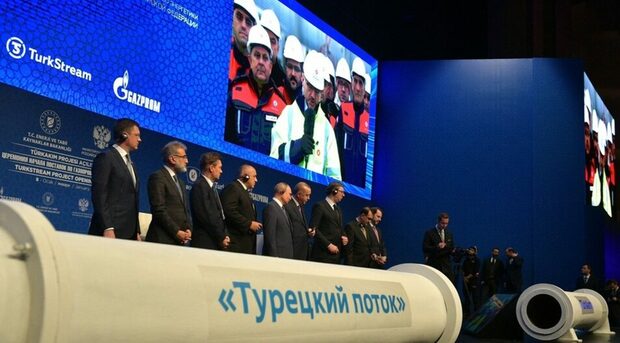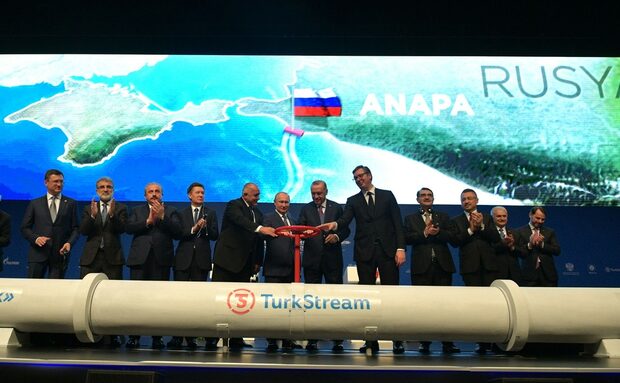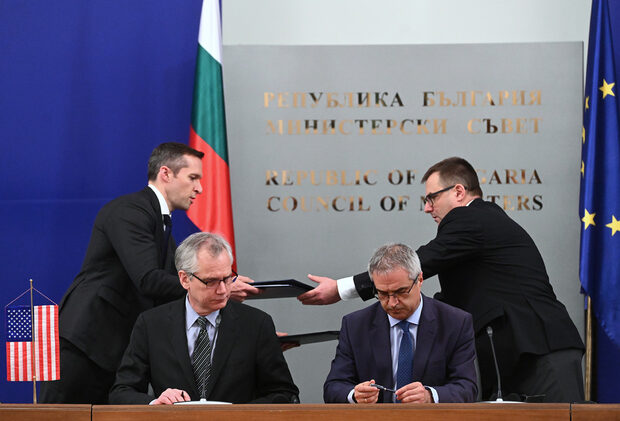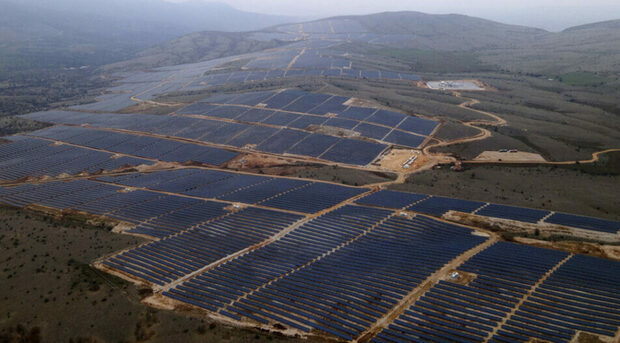If the Bulgarian grand energy strategy "2033-2053", presented last week by the caretaker cabinet and President Rumen Radev, somehow gets implemented, the energy sector could literally explode. The plan lays down so many new power generation capacities that most would not work simultaneously or the grid, in its current form, would simply collapse.
This, of course, was not spelled out by caretaker Energy Minister Rossen Hristov when he officially presented the strategy. Also, it was not made clear where the estimated BGN 120 billion required for the projects would come from. Foreign investments were mentioned in passing, but nothing concrete, which made the whole strategy sound like wishful thinking.
The strategy foresees a huge investment in new nuclear units - a total of 22 billion euros (BGN 44 billion). Another 18.6 billion euros (over BGN 36 billion) would go to green hydrogen electrolysers and storage systems. There are also new hydro plants (they play a vital role in balancing renewables), solar and wind plants, which would accompany the phase-out of coal. However, there was little mention of key topics such as industry decarbonisation, energy efficiency, smart grids, energy cooperatives and decentralization of the energy system.
The strategy's strangest aspect is its forecast for a rise in electricity consumption. The total projected consumption in the plan for 2053 is 60 tWh, with just over 38 tWh for 2022. It's calculated that the use of electric cars alone would account for 15% of electricity consumption. However, this only means 9 tWh of additional needs compared to the current ones, and that's without taking all other factors into account. Data from recent years show that electricity consumption is actually falling - mostly due to energy efficiency and industrial modernization.
To maintain its pole position in the Balkans in electricity production, Bulgaria does need a well-structured, long-term plan. But Radev's plan envisages an expensive expansion of the state's role in the sector. It also fails to comprehend the essential changes coming to regional markets and industry. In the future, Power purchase agreements (PPA) will evolve, and big businesses will not rely so much on the grid, because almost every factory, warehouse, hospital, and school will produce electricity on its own, further reducing overall consumption. Moreover, these same processes will occur simultaneously in Bulgaria's neighbors, maybe even at a faster pace, which will make megaprojects redundant.
More nuclear
In the last few weeks, Bulgarian politicians once again looked to new nuclear facilities. Mr Radev's strategy reflects this new plan, envisaging two new reactors in Kozloduy by 2045 and two at the site of the Belene NPP in the period 2035-2040. By comparison, the two currently operating units of the Kozloduy NPP are planned to work until around 2050.Due to the energy price crisis across Europe, the Bulgarian plant is currently reporting record revenues. So this probably explains Mr Radev approving new nuclear investments. The cost of building a nuclear power plant, however, is enormous and has only gone up in recent years. Construction alone would take at least 10 years. It is impossible to predict whether any nuclear project would be economically justified while Kozloduy is still operational and considering the dynamic development of new renewable projects in the region.
According to the cabinet's calculations, the new 2,000 megawatt units in Belene will cost 10 billion euros, and those in Kozloduy - 12 billion euros. This calculation sounds askew, as 6 years ago the estimated price of Belene NPP was 10.5 billion euros, and with inflation and the increase in the price of raw materials, the amount could top 16 billion euros.
The crucial issue with NPPs is that their output cannot vary significantly within the day. Increasing the share of this energy in the mix makes the system more difficult to manage because at night these plants alone will produce more than is consumed. This means that all other plants will have to be shut down. Another odd claim in the strategy is that Bulgarian electricity consumption will double in the next 30 years. More than a decade ago, when the Belene project was launched, politicians kept insisting that electricity consumption would increase and new capacities would be needed by 2020. In reality, electricity consumption never rose.
The poor miner
The most contentious topic in Bulgarian energy is the future of the country's coal plants. Until recently, the process of their decommissioning was planned to start as early as 2026 due to Bulgaria's commitment to the EU to reduce carbon emissions by 40%. However, just a few days before the strategy was presented, Parliament obliged the government to renegotiate this.
President Radev's strategy envisage that coal plants will not be phased out until 2030 at the earliest. However, if the price of electricity in coming years remains within the average from the beginning of 2023 (130 euros/MWh), coal plants would be unable to function until them as they need more than 160 euros/MWh to cover their expenses for carbon price etc. Undoubtedly, until sufficient replacement capacities are built, coal power plants have their place in the energy mix, especially during winter.
What is solar energy?
The strategy foresees 7 gigawatts of new solar energy with 2 gigawatts of wind capacity by 2030, followed by 5 gigawatts of renewables with 600 megawatts of batteries later. During the presentation of the document, the topic of offshore wind farms was raised, but Mr Hristov called it one of "limited" interest.
The strategy's calculations run counter to reality yet again, as the Electricity System Operator (ESO) is currently assessing requests for the installment of 33 gigawatts of renewables. None of these are taken into account in the strategic document.
When asked why Greece has 28 gigawatts of solar capacity planned for the same period, Minister Hristov replied that our southern neighbor has a huge potential for renewables. Taking these developments into account is crucial, however, as Greece is a primary importer of Bulgarian electricity and if its demand decreases, the need for new capacities in Bulgaria will also decrease. The case is similar with Turkey, where a NPP is currently under construction.
The Danube's hydro dream
The plan also sets out the construction of 870 megawatts of hydropower capacity in the next 7 years. The initiative relies on hydroelectric power stations along the Danube River, which would be a joint project with Romania (there will be a need to flood large areas of the river's coast). It was not made clear whether Romania is aware of these plans, however. In addition, the plan foresees a new Mesta HPP and Gorna Arda HPP, as well as the extension of the Chaira Pumped Storage Hydro Plant, which was gravely damaged last year and is not yet operating again, with no forecast when it will be.Chaira, the largest plant of its kind in the Balkans, must be prioritized even though expectations are that at least BGN 2 billion would be needed for that.
In general, it remains unclear why Mr Radev and Mr Hristov launched the strategy. Most political parties have expressed serious reservations about it. According to WCC, the document seriously deviates from the development trends set by neighboring countries and investor interest in the region.
Perhaps the most important part of the energy strategy should have been the development of the transmission network and smart grids. If the grid does not get better suited for the future, it will not be possible to build any photovoltaics, nor will it be possible to build all the charging stations that will power the cars in the country even if large-scale projects such as nuclear power plants and hydroelectric power plants are being built. None of this was covered by the document at this stage.
If the Bulgarian grand energy strategy "2033-2053", presented last week by the caretaker cabinet and President Rumen Radev, somehow gets implemented, the energy sector could literally explode. The plan lays down so many new power generation capacities that most would not work simultaneously or the grid, in its current form, would simply collapse.
This, of course, was not spelled out by caretaker Energy Minister Rossen Hristov when he officially presented the strategy. Also, it was not made clear where the estimated BGN 120 billion required for the projects would come from. Foreign investments were mentioned in passing, but nothing concrete, which made the whole strategy sound like wishful thinking.












